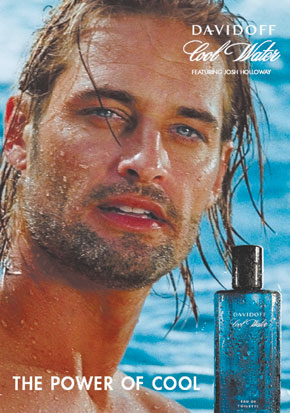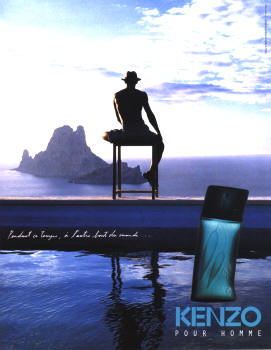...and perfume is exactly what I wanted to talk about today. I've been meaning to write about this topic for a while because a few of my guy friends weren't very sure about what it is they use as their daily scent. I assume most guys out there, possibly some girls too, think that perfumes are for girls and only cologne/aftershave is for guys.
They couldn't be more wrong! Perfume is definitely not just what girls wear! In fact, engendering perfumes is merely a marketing strategy to convince more guys that they should buy those specific perfume brands. While it is true perfumers keep in mind that men prefer fresh and woody
notes to their perfumes and women prefer oriental and floral notes, big perfume houses sell unisex fragrances as they agree, as do I, that the human nose is very similar between sexes and that choosing a fragrance should not be limited by the words men or women next to the name.
As a category, perfumes are a broad spectrum of perfume-oils and alcohol/water mixtures. Based on the concentration of the perfume oils, hence their intensity and longevity, perfumes are further classified into several types:
1. Perfume extract (Extrait)

The Perfume extract is the strongest of mixtures and its concentration is somewhere between 15%-40% (typically 20%) aromatic compounds. An example of Extrait designed with men in mind is Nasomatto's Silver Musk, a very clean musky scent that has slight floral and metallic undertones. Along with the higher concentration though, comes a heftier price tag - $190.

2. Eau de Parfum (EdP) or Parfum de Toilette (PdT)
A strong mixture containing between 10%-20% (typically 15%) aromatic compounds.Sometimes listed as "eau de perfume" or "millésime". A nice example of a gourmand EdP is Thierry Mugler's Angel Men or A*Men. With its sweet "edible" note of Chocolate, Coffee and Caramel, this fragrance is suited for a sweet-toothed guy and is only to be used in the winter!
3. Eau de Toilette (EdT)
A medium strength mixture containing between 5%-15% (typically 10%) aromatic compounds. Owing to their milder potency, EdTs are the most common male fragrances out there. One of my personal favourites is Armani Code, an oriental velvety fragrance that a lot of stylish guys like to use for more formal occasions.
4. Eau de Cologne (EdC)
Cologne is the most troublesome of all categories, mostly because the word itself has somehow gotten into mainstream usage and is now used by most people as a broad category for male fragrances. The truth however is far from that. 'Eau de Cologne' started out in 1706 in the city of Köln/Cologne in Germany as a specific fragrance and trademark. In time the term became generic for Chypre (see below) citrus perfumes (without base-notes). Its concentration ranges between 3%-8% (typically 5%) aromatic compounds.
5. Splash/Aftershave
While most guys have switched to the non-alcoholic, non irritating aftershave balm, there's still some guys who like their Old Spice Aftershave. Aftershaves are the mildest concoctions out there, with respect to intensity and longevity, with most containing between 1%-3% aromatic compounds. Two of the most well known aftershave manufacturers are Geo F Trumper and Floris, both of them British-based companies with a history in the market of Shaving/Grooming products.

Fragrance Notes and Olfactive Families
Besides knowing what exactly it is you're buying and using, I think all guys should be a little proficient in describing a scent. Although I'm far from being an expert in perfumery I'll do my best in summarizing what is important.
Firstly, each perfume has what is called 'Fragrance Notes' and very similar to what an oenologist (wine specialist) does with wine, a good perfumer is capable of describing a scent on three sets of notes that harmoniously (or sometimes not) create the scent. Due to the complex composition of perfumes and the volatile nature of alcohol and the aromatic oils, a perfume unfolds over time.
What the nose perceives right after application are called Top Notes or head notes and they consist of small light molecules that evaporate faster. Top Notes are very important in selling a fragrance as we base most of our decisions on first impressions.
As top notes dissipate, the heart of the scent, the Middle Notes kick in, and their role is mostly to mask the initial unpleasant impression of the base notes.
The scent that appears close to the departure of the Middle Notes forms the Base Notes, which, together with the Middle Notes forms the Theme of the perfume. The compounds usually used for the Base bring depth and solidity to the perfume, and are often richer and deeper scents which are usually perceived 30 minutes or more post-application.
On top of categorizing a perfume by its three notes, an olfactive taxonomy system has been developed to aid in initially categorizing a perfume based on its overall impression. For example, if a fragrance has mainly a scent of fresh notes, plus weaker scents of woody and citrus notes, we could say that this fragrance is Fresh, but with citrus and woody undertones. The dominant part is usually the heart of the fragrance.
While again I emphasize there is no actual divide between male and female fragrances, manufacturers have predominantly created male fragrances belonging to four families:
1. Fougère (pronounced foo-jer)

This is the most common male fragrance family. Fougère often contains Coumarin, Lavender and Oakmoss and is therefore characterized by its sharp herbaceous and woody scent. The name comes from the French word fougère, which means fern. While Fougère perfumes do not smell of fern the name comes from a now discontinued fragrance by Houbigant called Fougère Royale (Royal fern)which was the first fougère fragrance.
Popular Fougère fragrances include: Polo Sport(EdT) by Ralph Lauren, Platinum Egoiste by Chanel, Cool Water(EdT) by Davidoff, Jazz by YSL and Paco Rabanne Pour Homme(EdT).


2. Citrus (pronounced sit-rus)

An old fragrance family (originating in the German city of Köln/Cologne) that until recently consisted mainly of "freshening" Eau de Colognes, due to the low tenacity of citrus scents. Development of newer fragrance compounds has allowed for the creation of primarily citrus fragrances
Popular Citrus fragrances include: Eau de Sauvage(EdC) by Dior, 1881(EdT) by Cerruti, D&G Masculine by Dolce&Gabanna and Happy by Clinique
3. Chypre (pronounced sheep-re)

A Chypre, french for Cyprus, fragrance contains woody, mossy and floral notes. Often it will contain Oakmoss, Sandalwood, Patchouli, Labdanum, Bergamot and Vetiver. It was named after a feminine fragrance by François Coty called 'Chypre' from 1917.
Popular Citrus fragrances include: Givenchy Gentlemen, Fendi Uomo(EdT), Vetiver(EdT) by Guerlain, Aramis(EdT), Van Cleef, Arpels, Quorum by Puig, Antaeus by Chanel and 212 Men by Carolina Herrera.
4. Oriental

Oriental fragrances are common in both male and female fragrances. They are often warm and spicy, feature the sweet animalic scents of ambergris and labdanum and are often combined with ingredients such as Vanilla, Tonka bean and sometimes Sandalwood. Oriental perfumes bring to mind Victorian Era imagery of the Middle East and Far East.
Popular Oriental fragrances include: Obsession for Men by Calvin Klein, Joop! Homme by Joop!, Le Male by Jea Paul Gaultier, Equipage(EdT) by Hermes and Egoiste by Chanel.
5. Marine (also Aquatic, Oceanic or Ozonic)
The Marine fragrance is relatively new and is used to describe scents that evoke a feeling of sea air. This category appeared in 1991 with Christian Dior's Dune. An ingredient named calone, a synthetic scent discovered in 1966, is used to give perfumes the marine scent. Marine undertones are sometimes added to augument Floral, Oriental and Woody fragrances.

Popular Marine fragrances include: Kenzo Pour Homme, L'Eau D'Issey pour Homme by Issey Miyake and New West for Him by Aramis.
6. Floral
While in the past, floral scents have been considered very masculine, nowadays, especially in the West, they are slightly less popular as men's fragrances.
Popular Marine fragrances include: Agua Lavanda by Puig, Insensé by Givenchy
7. Gourmand (pronounced Gor-mand)

Last but not least is one of the most interesting categories in perfumes: Gourmand fragrances, which literally means epicure fragrances. It so happens that most of what we perceive as taste in food is mostly smell. Perfumers, knowing that, have started designing more and more fragrances that have 'edible' notes and have applied them to perfumes, grooming products and even dishwashing liquid. I know I was tempted to taste my almond shower-gel one too many times.
To top it all off perfumers and fragrance enthusiasts have created a fragrance wheel for easier reference in categorizing perfumes:

Tying everything together I hope you've enjoyed this short immersion into the world of fragrances and don't forget the basic rules for applying any type of perfume:
- Never put perfume on your clothes! Firstly it can damage your clothes by discoloration and secondly it does not help in any way with the diffusion of the scent.
-The best places for perfume application is on your wrists and behind your ears. Guys, if you prefer spray a little between your clavicles in the summer and girls you can do the same with your cleavage.
- Less is More! Remember, our noses adapt quickly to a strong smell which means that in a few minutes you won't be able to sense your perfume although it is definitely still there. Best thing to do is ask a friend whether or not it can still be smelt.
References:

